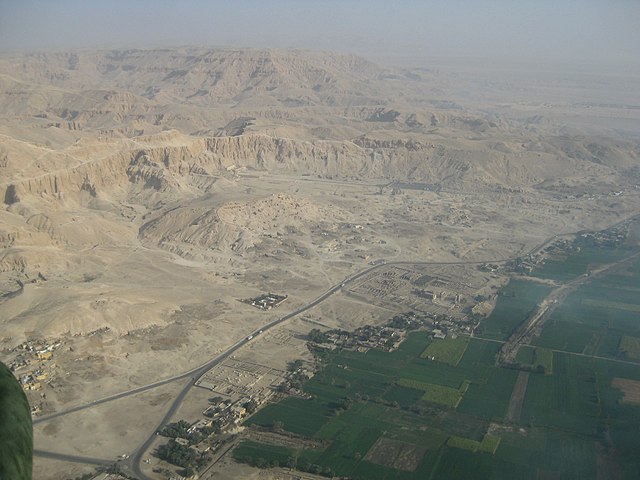The Thebaid or Thebais was a region in ancient Egypt, comprising the 13 southernmost nomes of Upper Egypt, from Abydos to Aswan.
Pyramidion of Nebamun. Possibly top of a stela. Limestone. 19th Dynasty. From Egypt. Bought in the Thebaid (Thebais) but probably it came from Deir el-Medina. The Petrie Museum of Egyptian Archaeology, London
Thebes, known to the ancient Egyptians as Waset, was an ancient Egyptian city located along the Nile about 800 kilometers (500 mi) south of the Mediterranean. Its ruins lie within the modern Egyptian city of Luxor. Thebes was the main city of the fourth Upper Egyptian nome and was the capital of Egypt for long periods during the Middle Kingdom and New Kingdom eras. It was close to Nubia and the Eastern Desert, with its valuable mineral resources and trade routes. It was a religious center and the most venerated city during many periods of ancient Egyptian history. The site of Thebes includes areas on both the eastern bank of the Nile, where the temples of Karnak and Luxor stand and where the city was situated; and the western bank, where a necropolis of large private and royal cemeteries and funerary complexes can be found. In 1979, the ruins of ancient Thebes were classified by UNESCO as a World Heritage Site.

Pillars of the Great Hypostyle Hall, in The Holy Land, Syria, Idumea, Arabia, Egypt, and Nubia
The Theban Necropolis
Serekh of Intef I inscribed posthumously for him by Mentuhotep II
Depiction of Asiatic (left) and Egyptian people (right). The Asiatic leader is labeled as "Ruler of foreign lands", Ibsha.





